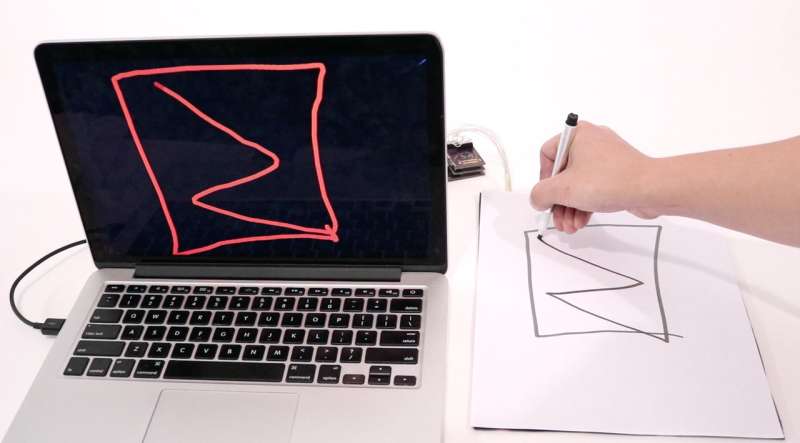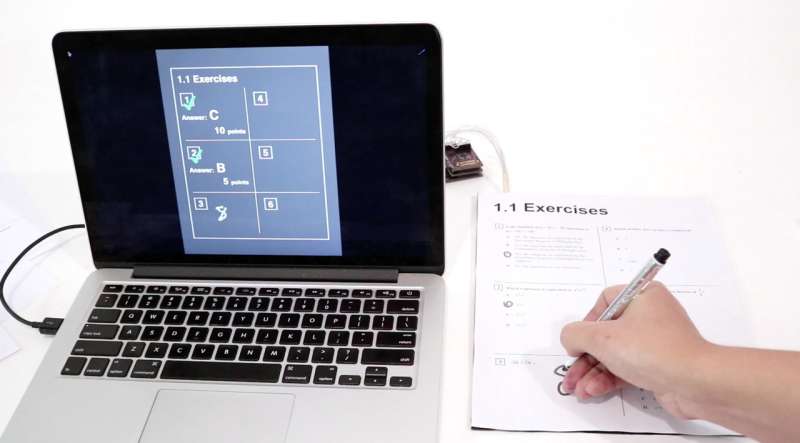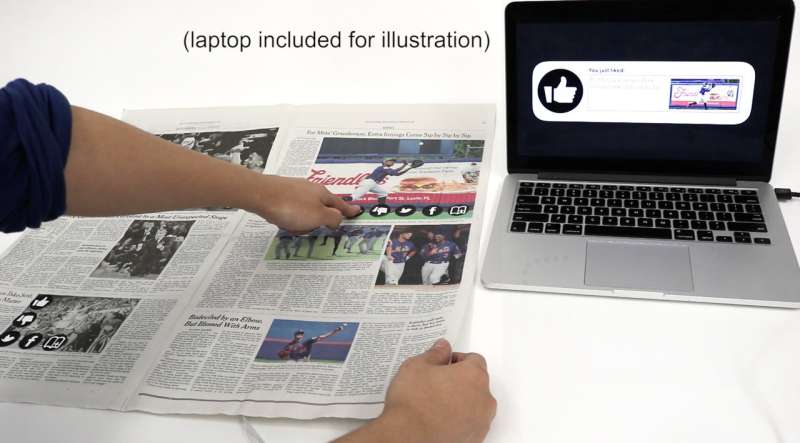Credit: Yang Zhang and Chris Harrison
A pair of researchers at Carnegie Mellon University has developed a way to make ordinary paper touch sensitive. Yang Zhang and Chris Harrison have written a paper describing their technique and have posted it on their website. They are also going to be showing off samples that use it at this year's ACM CHI Conference on Human Factors in Computing Systems.
As personal electronic devices have become more popular, ordinary paper has increasingly been pushed into a background role. But Zhang and Harrison hope to bring paper into the information age by making it touch sensitive, and thus interactive. The reason for doing so is cost. They believe the technique they developed is so inexpensive that the paper used could still be tossed in the trash can when it is no longer useful. Another benefit is that once something is written or drawn on the paper, it can be stored in the same ways paper has always been stored, by filing it in a physically retrievable medium—a cabinet. And finally, there remains the charm of handwritten documents, which can also be saved electronically.
To make paper touch sensitive, the pair added conductive material to the back of a single sheet and then connected it to a reading device, which, in turn, was connected to a laptop computer. As the pair note in a video outlining the development process, they started out by applying a conductive coating, but that was soon replaced by printing grids directly onto a sheet along with a connecting site.
The result is a piece of paper that is touch sensitive in ways similar to a touch screen—a finger or an ordinary writing implement, such as a pen or pencil, can be used to draw words or pictures on the paper, which will then appear on a computer screen. The paper can also be used to host icons, which a user can "click" using a finger or other implement. The researchers also suggest some possible uses for the interactive paper—student test sheets, interactive newspapers, or interactive games, some of which might employ dedicated game pieces that the paper can recognize.
-
Credit: Yang Zhang and Chris Harrison
-
Credit: Yang Zhang and Chris Harrison
More information: Pulp Nonfiction: Low-Cost Touch Tracking for Paper, yang-zhang.me/research/Pulp/Pulp.html
Yang Zhang et al. Pulp Nonfiction, Proceedings of the 2018 CHI Conference on Human Factors in Computing Systems - CHI '18 (2018). DOI: 10.1145/3173574.3173691
© 2018 Tech Xplore


























